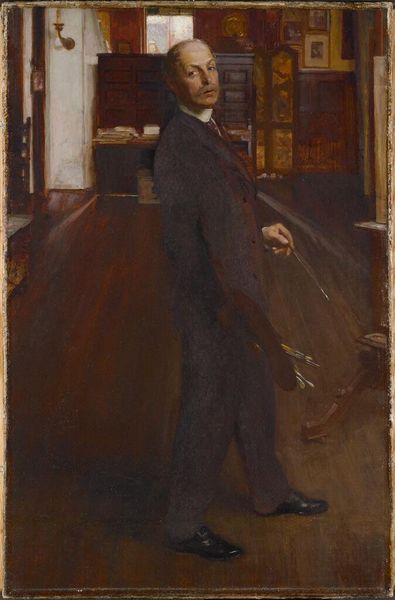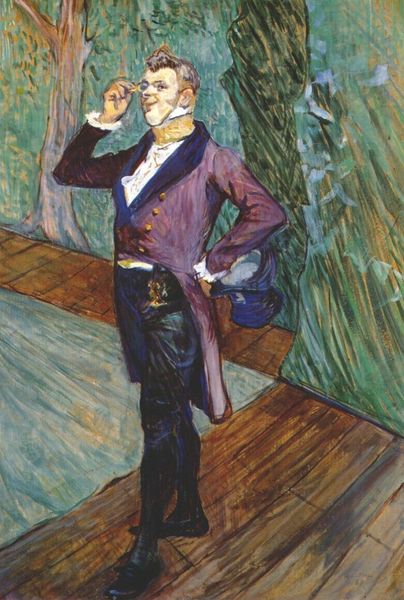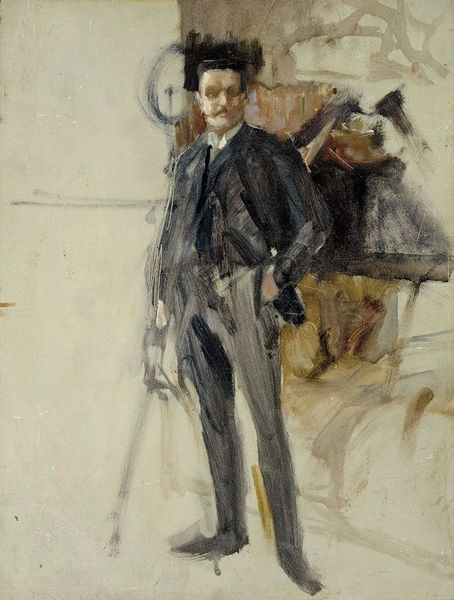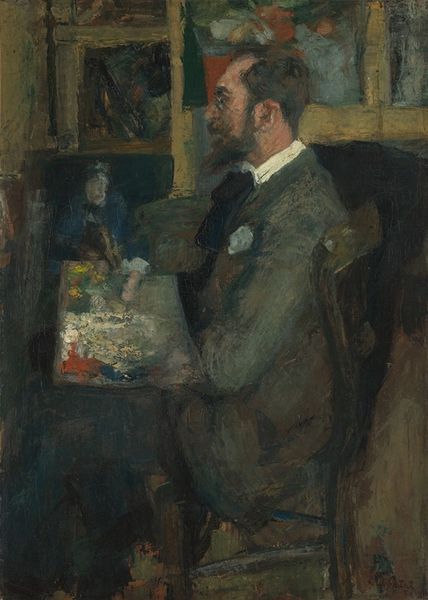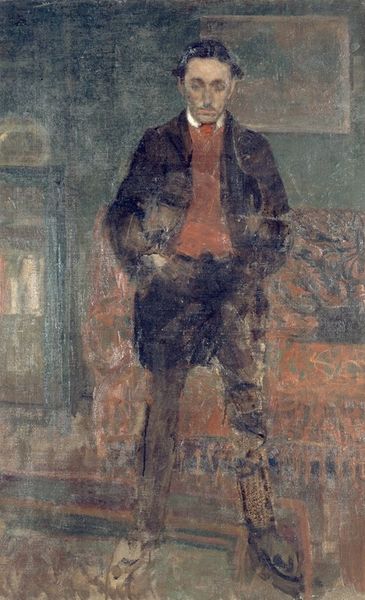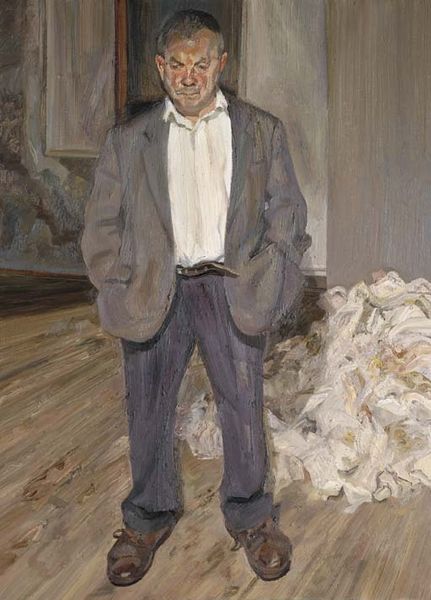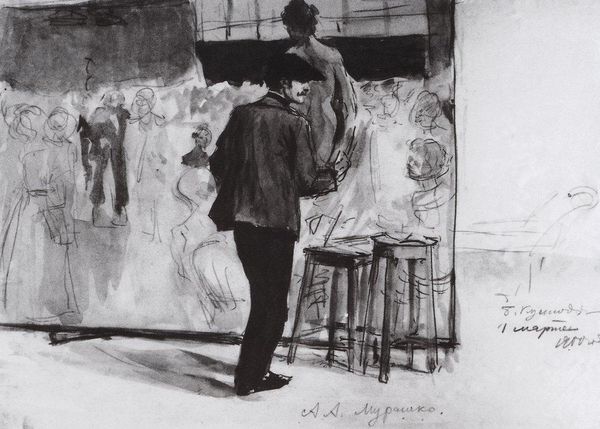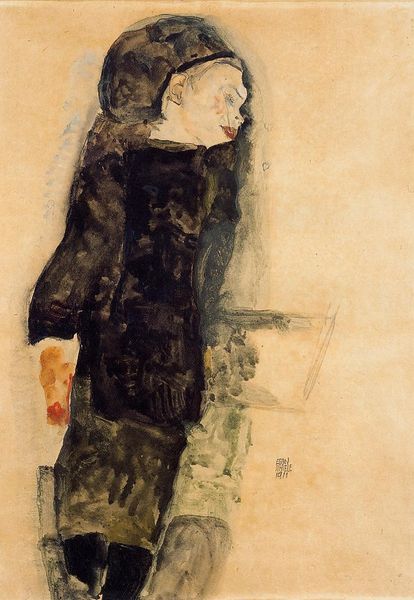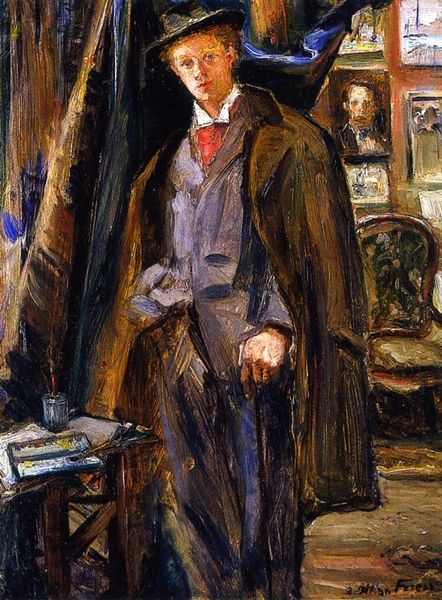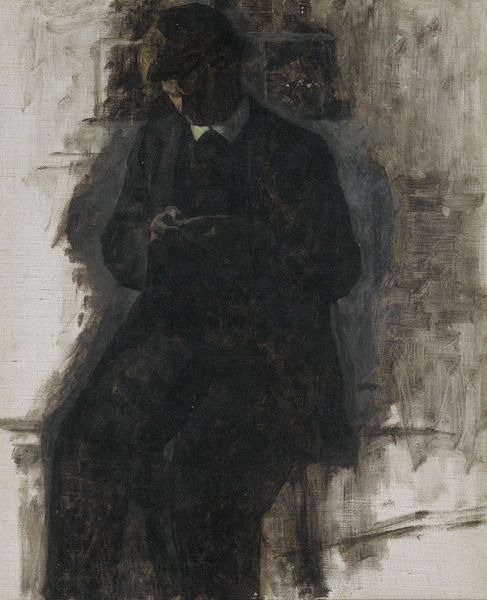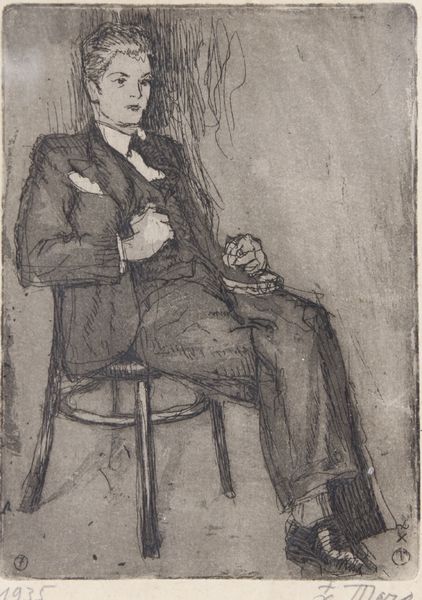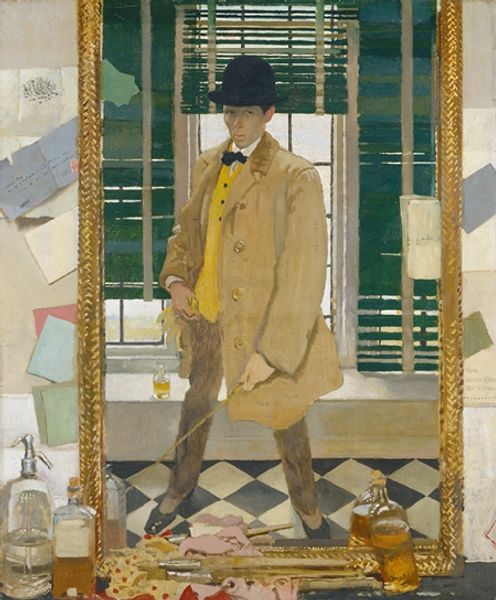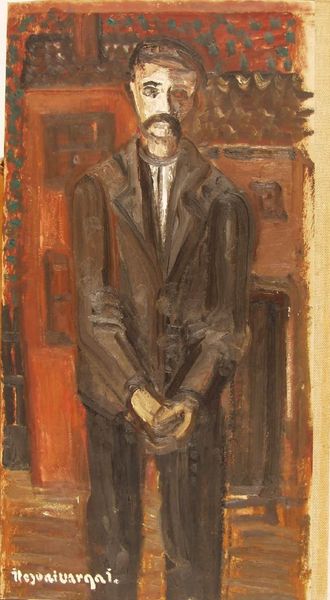
Copyright: Public domain
Curator: This is Carl Larsson's "Self-Portrait," created in 1895. Editor: It feels incredibly intimate, doesn’t it? More of a peek into his working life than a formal portrait. There's a charmingly cluttered atmosphere to the studio, the paintings displayed all around. Curator: Precisely! Larsson cultivated this persona of the modern artist deeply embedded in his domestic sphere, and it really cemented his appeal to the rising middle class. This work reflects the public's growing fascination with the artist as a personality, beyond just the producer of artworks. The art world was transitioning to valorize artists themselves, not just their artworks. Editor: Looking at the visible brushstrokes and the watercolor medium, I wonder about the labor involved. Watercolor requires speed and precision, very unforgiving materials. It makes me consider Larsson's everyday life in the studio. Was this piece a preparatory study? Or a sketch executed purely for his own pleasure? Curator: Good question! He embraced watercolor and its associated accessibility to further cultivate his image as a relatable figure. Prints of his watercolors were widely available, and these would have adorned many middle-class homes. Larsson's success was based, in part, on strategically positioning himself and his artwork for reproduction and distribution. Editor: The easels laden with works-in-progress fascinate me. The viewer becomes almost a co-conspirator within Larsson's artistic processes. I wonder what these sketches would sell for, the very texture speaks to his artistic vision. Curator: That's very astute, his marketability extended far beyond paintings. Larsson carefully crafted an entire lifestyle brand, anticipating the blurring lines between "high" art and domesticity. His legacy exists through the market penetration of images of his home. Editor: I’m especially drawn to how Larsson depicts his clothing, how those lines indicate not only his social status, but that this status itself comes from his hard labor in this space, his material processes, it seems… performative. He carefully considered both his craft and public image. Curator: Exactly. Larsson’s ‘self-portrait’ cleverly captures the zeitgeist of the late 19th century. A cultural phenomenon of personality branding that persists even today. Editor: The painting encourages viewers to connect with an artist whose self-image played a powerful role in establishing a vision that lingers over a century later.
Comments
No comments
Be the first to comment and join the conversation on the ultimate creative platform.
